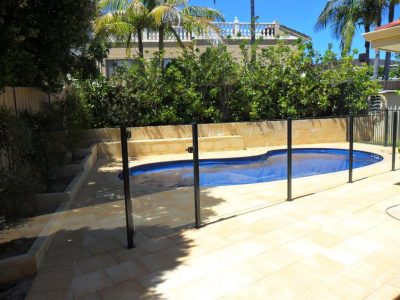With summer just around the corner, what better way to spend the hot summer with friends and family outdoors? There is seemingly endless opportunities for barbecues, frozen delights, camping, and of course water activities. What could be better, than being dipped in a body of cool water. If going to the beach isn’t practicable, a swimming pool will do just fine. A refreshing dip in that watering hole is the ideal remedy on a sizzling summer day.
Many of our childhood memories were spent near the water, whether at the beach, or the swimming pool. However, when going to the beach or even a lake isn’t an option, instead, we opted for the swimming pool. But even if we had fun in mind, we were always aware of the potential hazards that come with swimming pools.
Now all grown up, we are more conscientious of these dangers. So in this article, we would like to share these simple safety tips when going swimming in the pool. After all, we can still have all the fun we want around the water without any accidents, and let’s face it the biggest risk is with our children.
Setting Pool Safety Rules
As always, safety should be the first concern for everyone in the pool. While there are precautionary measures in place, safety should be the individual’s responsibility; in the case of babies, toddlers, and other young children it’s the parents or guardians.
That being said, it is important to educate people on what conduct is proper and acceptable whenever they are in the vicinity of the pool. To firmly establish these safety regulations in everyone’s minds,
Basic safety instructions should include the following:
- No running on the pool deck
- No diving, especially on the shallow part of the pool
- No pushing, shoving, or rough playing near or in the pool
- Young children should only swim when accompanied by an adult
- No dunking or holding another person’s head underwater
Children Should Know How to Swim
Swimming lessons are worth the investment. While basic lessons will not make someone drown-proof, at least he or she has the fundamental knowledge on how to stay safe when in the water.
Adults should also take up swimming lessons. It’s never too late (or too early, in the case of babies and toddlers) to learn how to swim.
Frequent Inspection of the Pool Area for Hazards
Proper storage of chemicals should be observed. Children, when exposed to these potential harmful substances, can suffer from injuries. Make sure that pool chemicals are properly stored and out of reach from unauthorised persons.
Check for slip hazards around the pool area. This can cause fall accidents, which can have serious consequences. Also, when not in use, clear the vicinity of toys, tubes, cleaning equipment, or any object that can trip people.
Floatation Devices For Safety and Peace of Mind
One good way to ensure pool safety is to use floatation devices. It’s a precautionary measure suitable for young children or anyone who’s not entirely confident about their swimming skills.
For parents and guardian, floatation devices serve to protect the children from drowning or related injuries—to their peace of mind.
Arm floaters and life vests are popular options that are ideal for people of nearly all ages. Even toddlers who can’t swim can have a comfortable time staying afloat on the pool.
Setting Up a Pool Fence
Let’s face it; there’s always the possibility of a child wandering into the pool area unsupervised. The solution: installing a barrier around the water to keep out unsupervised children.
To prevent a child from entering the pool area, you will need a sturdy barrier. This means pool screens are out; while they seek to serve the purpose of keeping children out, this type of barrier is easily removed. Even with minimal effort, kids can topple down the obstacle and gain entry into the pool.
To ensure pool safety, you will need to enclose the area with pool fencing that meets Australian standards and regulations. Sealing off the pool area when there are no adults to supervise the children during swimming is an effective way to prevent drowning-related accidents.
If you want to learn about your pool fencing options, talk to us. We’re here to help. Contact Craftsman Fencing today





